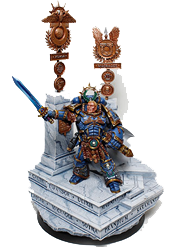
There are six schools of Indian, the miniature painting service which is examined beneath:
1. Pala School of Miniature Painting:
The artistic creation going back to the eighth century AD has a place with this school. This school underscored the representative utilization of hues, and the subjects were regularly taken from the Buddhist Tantric customs.
Nalanda, SomapuraMahavihara, Odantapuri, and Vikramasila Buddhist religious communities witness how pictures of Buddha and different divinities were depicted on palm leaves. Many understudies went to the spot each year and gained proficiency with the idea, style, and how assortments of hues are utilized in single compositions.
2. Jaina School of Miniature Painting:
This scaled-down canvas school picked up noticeable quality in the eleventh century AD when strict writings like ‘Kalpa Sutra’ and ‘Kalkacharya Katha’ were depicted as little artworks. In this school, characteristics, including gold and silver, were utilized to portray the narratives.
Depiction of expanded eyes, square formed hands, and description of classy figures are the school’s primary trademark highlights. The artworks frequently showed male models and goddesses of the Tirthankara using hues like green, red, gold, and blue. In this school, compositions of goddesses were indicated regularly intensely ornamented.

3. Mughal School of Miniature Painting:
This school prospered from sixteenth to eighteenth hundreds of years AD, particularly under Akbar’s rule, with a combination of Indian canvases and little Persian compositions. Curiously, Persian miniature paintings were generally affected by Chinese artworks. This school’s artistic creation depends on graceful naturalism dependent on the close perception of nature and fine and fragile drawing. Mughal works of art contain scenes of illustrious court, chasing endeavours, untamed life, and fights. Plants and trees have depicted all things considered, and the artistic creations had creamy edges that were finished vigorously.
4. Rajasthan School of Miniature Painting:
The decay of the Mughal scaled-down compositions gave ascent of the Rajasthani School. This school is isolated into different schools, contingent upon the district, for example, the Mewar School, Marwar School, Hadoti School, Dhundar School, Kangra and Kullu Schools. Like the Mughal Emperors, the Rajput rulers were additionally admirers of artistry and gave their support to smaller than expected compositions.
The works of art of this school were propelled by the Bhakti Movement of Medieval India and Hinduism. This school is joined by the unmistakable style of various Rajputana Kingdom with a couple of regular highlights, for example, portraying stories from the Ramayana and the imperial way of life of lords and sovereigns.
5. Orissa School of Miniature Painting:
This school appeared during the seventeenth century AD. The more significant part of the compositions portrayed Radha and Krishna’s romantic tales and stories from ‘Krishna Leela’ and ‘Gita Govinda.’ These compositions were wealthy in shading and regularly performed the lofty scene of the eastern pieces of India.
6. Pahari School of Miniature Painting:
This school’s work of art is propelled by the Mughal School and the Rajasthani School of smaller than average artistic creations. It is created in the bumpy realms of North-Western India. Every single painting style has its particular highlights, yet the depiction of divine beings and goddesses is one of the most widely recognized highlights of this school. The outstanding excellence of the Himalayas was likewise frequently portrayed in these canvases.